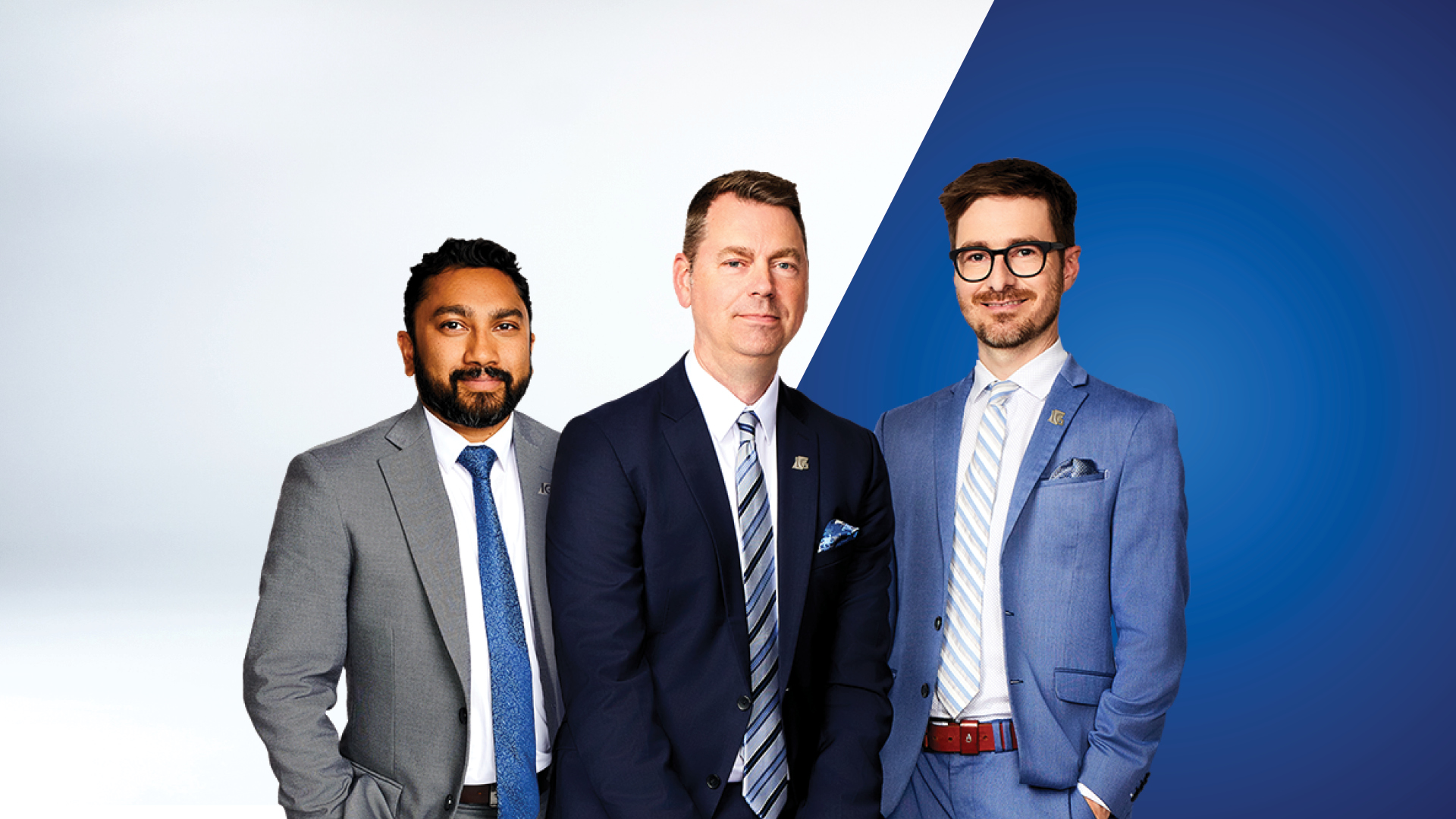Some investors think that a retirement plan is simply having a Registered Retirement Savings Plan (RRSP) and contributing to it regularly. However, while an RRSP can certainly play an important role, it’s just the tip of the retirement planning iceberg.
Comprehensive retirement planning includes a wide range of considerations, including income from government pensions, work pensions, registered and non-registered savings, as well as how much you’ll need to save to provide the kind of lifestyle you want and how to manage your investments after you’ve retired.
In this deep dive into retirement planning in Canada, we look at when you should start saving for retirement, how much to save, what to invest in, tax strategies to maximize your retirement savings and retirement income, and when to start drawing government pensions.
Why it pays to start saving early for retirement
A crucial part of retirement planning in Canada (and any kind of long-term savings plan) is having time on your side. Compound returns play a key role in helping you to grow your savings faster. Compounding is when you earn returns on top of the returns you’ve already earned (and by returns we generally mean interest, dividends and capital gains).
Let’s say you invested $1,000 in year one and received $50 in interest and dividends. By keeping those gains in your investments (rather than withdrawing them) you’ll start year two earning returns on $1,050 plus any further money you invest that year.
Below are examples of the amounts that you’d accumulate after different time periods (based on returns that average 5% per year, compounded monthly):
| Years of investing | $300 per month | $500 per month | $750 per month |
| 10 years | $46,585 | $77,641 | $116,462 |
| 20 years | $123,310 | $205,517 | $308,275 |
| 30 years | $249,678 | $416,129 | $624,194 |
| 40 years | $457,806 | $763,010 | $1,144,515 |
After 20 years of investing, the amounts are almost triple those after 10 years, rather than double. And after 40 years, rather than quadrupling, the amounts increase almost ten-fold.
After 40 years of investing, around two-thirds of the totals are made up of returns, with only one-third being the money contributed. In this situation, compounding would allow you to accumulate around three times the amount of money that you invested. Clearly, starting retirement planning as early as possible is crucial in helping you to have substantial retirement income.
How much should you save for your retirement plan?
This question has as many answers as there are people. Everyone’s needs in retirement are different, as is their ability to save. You often see figures thrown around, such as $1 million, but this is not a very scientific concept.
This amount of money might provide a suitable retirement income for some people retiring soon, but what about people retiring in 2040 or 2060? One million dollars wouldn’t have as much buying power that far into the future as it has now.
There are several questions you should ask yourself when starting your retirement planning journey and working out how much you’ll need to retire, including:
When do you want to retire? If you hope to retire at 60, you’ll likely need considerably more money than if you plan to retire at 65 or 70. If, however, you’re planning on semi-retirement at first, then you might need less money. Also, if you delay taking government pensions, you can receive up to 42% more in CPP/QPP and up to 36% more in OAS.
What kind of retirement are you planning? Trotting around the globe to cross countries off your destinations bucket list will be a lot costlier than spending more time with the grandkids. Similarly, if you intend to maintain your working lifestyle, you’ll need to save more.
Are you likely to inherit money? If so, this could either reduce the amount of money you’ll need for your retirement or allow you to retire earlier.
As well as including investment income in your retirement planning, what other income can you rely on? How much CPP/QPP and OAS will you receive? Do you have a company pension? Do you own rental property? Answering these questions will help you to work out how much you’ll need to save for your retirement.
Will you be debt free when you retire? Having no mortgage payments to make or large long-term debts to service can substantially reduce the amount of retirement income you’ll need.
How long will your retirement be? People typically underestimate their life expectancy by several years, so it’s important to err on the side of caution and plan for a longer life than you actually expect. It may be better to leave a bigger legacy than run out of money.
This part of the retirement planning process is extremely complex, and having help from a financial advisor can be crucial. They’ll be able to put together a retirement plan that takes into account all of your potential retirement income sources, your post-retirement expenses, the kind of retirement lifestyle you’re hoping for and the amount you’ll need to save.
They’ll also put together a plan to help you reach that goal and constantly monitor it to make sure you keep on track.
Which investments to include in your retirement plan
The investment part of retirement planning requires a balancing act to ensure that your savings grow enough to fund your retirement while not being so risky that your savings might lose value just before you retire.
A balanced, diversified portfolio of investments is therefore recommended. A portion of your portfolio may need to be made up of riskier assets, such as equities (shares in publicly traded companies), which have the largest potential for growth.
The other portion of your portfolio will need to be comprised of safer assets, such as bonds, which are a kind of loan to either a government (this could be federal, provincial or municipal) or a corporation. While these are less risky, they provide greater security in return for lower returns over the long term.
Your financial advisor will recommend a portfolio of investments for you, and this will typically include mutual funds and exchange-traded funds (ETFs), as these provide immediate diversification, which reduces risk.
When you start retirement planning, you typically have a long time before you need to start drawing from your investments. In this case, it’s usually advisable to hold a larger percentage of equities than bonds, given that you’ll have greater potential for growth, and your portfolio will have longer to recover from any possible market downturns.
As you get closer to retirement, you’ll want to switch this around somewhat and hold a larger percentage of low-risk investments (while still carrying some equities to ensure your savings don’t lose their buying power due to inflation).
Using RRSPs and TFSAs in your retirement planning
When you’re investing for your retirement, apart from compound returns (as mentioned earlier), the other powerful tools for growing your investments faster are registered savings accounts.
Registered Retirement Savings Plans (RRSPs) provide an extremely tax-efficient way to save for your retirement and play a key role in retirement planning. Every dollar you contribute to your RRSP may be deducted from your taxable income for that year (depending on your RRSP deduction limit). This means that you’ll pay less in tax and can add more to your RRSP (helping it grow even faster).
For example, let’s say you earned $70,000 and contributed $10,000 to your RRSP. Your taxable income for the year would be reduced by $10,000, potentially saving you thousands in income tax.
Also, any earnings that your RRSP investments make — such as dividend payments, interest and capital gains — are not taxed, as long as they stay within your RRSP.
You can save as much as 18% of your previous year’s earned income annually in an RRSP, or $32,490 for 2025, whichever is the smallest amount. To help retirement savings grow even faster, many investors also contribute any windfalls — such as an annual bonus or part of an inheritance — to their RRSP.
When it’s time to make withdrawals from your RRSP (whether directly or after transferring it to a Registered Retirement Income Fund), those withdrawals are treated as taxable income, but by that point you should be retired and ideally in a much lower tax bracket than when you were working, and so you should pay less in tax.
Tax-Free Savings Accounts (TFSAs) provide another effective and tax-efficient tool for retirement planning. Unlike with an RRSP, TFSA contributions don’t give you an immediate tax break. However, they do allow your investments to grow tax free, and you pay no tax at all when you make a withdrawal from your TFSA (withdrawals are not considered income).
Also, because they’re not considered income, using TFSA withdrawals to boost your retirement income can prevent Old Age Security clawbacks (OAS payments are reduced once your income goes above a certain amount; for 2025 it is $93,454).
As with RRSPs, there is an annual maximum amount that you can contribute to your TFSA. For 2025, that maximum amount is $7,000. However, if you haven’t made any TFSA contributions since it was introduced in 2009 and were aged 18 or older that year, the total contribution room for 2025 would be $102,000.
Apart from helping your retirement savings grow much faster, TFSAs play a key role in making your retirement income more tax efficient. At certain points during your retirement, using part of your TFSA savings as retirement income will bring down your overall tax level because those withdrawals are not considered income (whereas withdrawals from other sources may have tax implications).
Other retirement planning tax strategies
There are several ways you can bring tax efficiencies into your retirement planning, both while you’re saving for retirement and when you’re retired.
One tax strategy involves the concept of income splitting, by having the higher earning spouse contribute to a spousal RRSP. Here’s an example of how this strategy helps with retirement planning:
Gabriela earns $120,000 and her husband Enrique earns $50,000. By contributing to Enrique’s spousal RRSP, Gabriela will have her taxable income reduced by the amount of her contributions, every year, thereby lowering her tax bill considerably.
Once they retire, Enrique may make withdrawals at a much lower tax rate than Gabriela, if he has considerably less retirement income than her.
Spousal loans are another way to use income splitting for a more tax-efficient retirement plan. It works particularly well if one spouse earns a significantly higher amount than the other. It involves the higher-earning spouse making a loan to the other spouse and charging that spouse the Canada Revenue Agency’s prescribed interest rate (which was 3% for the third quarter of 2025).
If implemented correctly (with the help of a professional tax advisor), any income your spouse earns from investing that money (in the form of interest, dividends and capital gains) is taxable at their lower marginal tax rate, which can reduce the family’s overall tax bill.
Retirement planning also involves ways of reducing taxes after you retire, for example through pension income splitting. When they retire, most investors move their RRSP investments into a RRIF (Registered Retirement Income Fund), so that they can make regular withdrawals without paying withholding tax. Once you reach 65, half of the RRIF income of the highest-earning spouse can be split with the lower-income spouse, to reduce the couple’s overall tax bill.
You can also split income from annuities derived from an RRSP or company pension fund, and you can share your Canada Pension Plan retirement pension with your spouse, with what’s known as CPP pension sharing.
Deciding when to start drawing CPP and OAS
A key component of retirement planning is deciding when you’ll start drawing retirement income from the Canada Pension Plan retirement pension (CPP, or Quebec Pension Plan in Quebec) and Old Age Security (OAS).
This is a key decision to make because it will affect the amount of money you get from CPP and OAS for the rest of your life. Many people start drawing CPP and OAS at age 65, but you can start drawing CPP as early as age 60 (the minimum age to draw OAS is 65) and you can delay receiving both CPP and OAS until you turn 70 (after that, there’s no benefit in delaying it any further).
The main disadvantage of drawing your Canada Pension Plan retirement pension early is that the amount you’ll get will be reduced, forever, which is a key drawback when retirement planning. For each year you draw CPP before 65, you’ll lose 7.2% of its value, to a maximum of 36% less if you start drawing CPP at age 60. Conversely, if you delay drawing CPP, you’ll receive an extra 8.4% per year, making a maximum total of 42% extra CPP if you wait until you’re 70.
Let’s see how that could impact your CPP retirement income. The maximum CPP payment in April 2025 for a 65-year-old starting to receive their CPP pension was $1,433. However, most people don’t receive that amount (given that it’s calculated depending on how much you paid in CPP contributions over the years).
Let’s say that you would receive the average monthly payment of $844.53 for a new retirement pension in April 2025 at age 65. Here’s how your income would change depending on the age you started to draw it:
Age when drawing Monthly CPP
| Age when drawing CPP income | Monthly CPP amount |
| 60 | $540.50 |
| 65 | $844.53 |
| 70 | $1,199.23 |
As you can see, drawing CPP at age 70 instead of 60 would provide you with more than double the amount. This larger amount will stay with you for the rest of your life and will increase along with inflation, so delaying taking CPP can be very financially beneficial.
It’s a similar case for OAS: the maximum amount of OAS in January 2025 was $727.67. Your OAS amount is calculated depending on the number of years you’ve lived in Canada since you turned 18 (with 40 years providing the maximum amount). If you waited until you were 70 to draw it, the maximum amount would be $989.63; again, a significantly larger amount.
When retirement planning, it’s important to understand the pros and cons of drawing your Canada Pension Plan retirement pension and OAS early or late. You might prefer to draw these benefits early if:
- You need the money to pay for regular living expenses.
- Your current health and family history suggest you may have a shorter life expectancy.
- You want to use CPP to allow you to semi-retire before you reach 65.
Alternatively, you might choose to draw them later if:
- You have enough income from other sources to live comfortably and want a larger guaranteed inflation-adjusted pension to protect against longevity risk.
- You don’t intend to retire until you’re older and want to keep accumulating CPP contributions.
- You want to delay drawing these benefits until you’ve stopped working altogether and are in a lower tax bracket.
Protecting your savings after you retire
Building up your savings to help you enjoy a comfortable lifestyle is only one part of comprehensive retirement planning. It’s also crucial to manage your investments properly after you retire.
Once you make the move from contributing to your investments to drawing from them, you open yourself up to “sequence of returns” risk. This is when your investments drop in value early on in your retirement (due to a market downturn), and you’re forced to cash in some of these assets for income, realizing the loss and therefore having less money to grow going forward.
If your investments experience a significant market downturn early on in your retirement, this could damage your savings to the point that they run out far earlier than they would have otherwise (you can find out more about sequence of returns risk here).
There are a couple of retirement planning strategies you can follow to help prevent this from happening:
- Keeping a cash reserve: this entails transferring some assets into an emergency cash reserve that can cover your expenses until your investments have had the time to recover from the downturn. It can take markets several years to recover from severe market downturns, so you would need a substantial cash reserve to protect yourself from sequence of returns risk.
- Buying a term annuity: this is an insurance product that gives you a guaranteed amount of income for a specific time. This could help prevent you from touching assets that have lost value due to a market downturn.
- Choosing downside protection: build portfolios with securities that have a proven history of preserving capital during market downturns. While fixed income naturally provides this cushion, select equity strategies can also be designed to help protect on the downside, giving investors confidence even when markets are volatile.
Maximizing your retirement income
Another key to successful retirement planning is setting up your investments to work hard for you after you retire. While you want your money to be protected, you also need it to grow. Canadians aged 65 can expect to live on average for around 20 years more, which means that, if you’re lucky, your retirement savings might have to last for up to three decades or longer.
Therefore, investing all of your retirement savings in safe assets, such as government bonds or guaranteed investment certificates (GICs), probably won’t deliver the growth you’ll need to ensure you don’t outlive your savings. You therefore need to consider having a mix of safe assets and assets with high growth potential, such as equities.
One of the trickiest aspects of retirement planning is shifting your savings into a mix of investments that can deliver stability during market downturns while also growing and providing consistent income. All while being tax efficient.
One way to achieve this is to select an investment product that is designed to provide a consistent amount of income (typically they target an annual income rate of 4-6% of the value of your investment, usually paid out in monthly or annual instalments) which is made up of a combination of interest, dividends, capital gains and a return of capital (your original investment), if necessary.
These investment products are designed to be tax efficient by having a variety of income sources; capital gains are taxed at a much lower rate than interest, while the return of capital is not taxed at all (which helps to keep your taxable income level lower).
Getting help with retirement planning in Canada, at any stage
As we’ve seen, retirement planning is extremely complex, both when you’re saving for retirement and when you’re using your retirement savings to provide income.
Your IG Advisor can help you save for a comfortable retirement in the most tax-efficient way possible, while ensuring that your retirement plan fits in with your overall financial plan and other financial goals.
Retirement planning is just one aspect of the IG Living Plan, which also includes managing your cash flow, holding the most appropriate investments, being prepared for the unexpected and having a robust estate plan.
If you’re a business owner, the Living Plan will also help you find the best strategy to have your business provide you with retirement income.
The Living Plan can run hypothetical situations to take into account possible eventualities, so that even if interest rates jump, markets fall or inflation increases, you’ll still be well placed to retire on schedule.
Book an appointment to discuss retirement planning with your IG Advisor. If you don’t have an IG Advisor, you can find one here
Written and published by IG Wealth Management as a general source of information only. Not intended as a solicitation to buy or sell specific investments, or to provide tax, legal or investment advice. Seek advice on your specific circumstances from an IG Advisor. Trademarks, including IG Wealth Management and IG Private Wealth Management, are owned by IGM Financial Inc. and licensed to subsidiary corporations. Insurance products and services distributed through I.G. Insurance Services Inc. (in Québec, a Financial services firm). Insurance license sponsored by The Canada Life Assurance Company (outside of Québec). GICs issued by Investors Group Trust Co Ltd., and/or other non-affiliated GIC issuers.
Mutual funds and investment products and services are offered through the Mutual Fund Division of IG Wealth Management Inc. (in Quebec, a firm in financial planning). Additional investment products and brokerage services are offered through the Investment Dealer, IG Wealth Management Inc. (in Quebec, a firm in financial planning), a member of the Canadian Investor Protection Fund.








